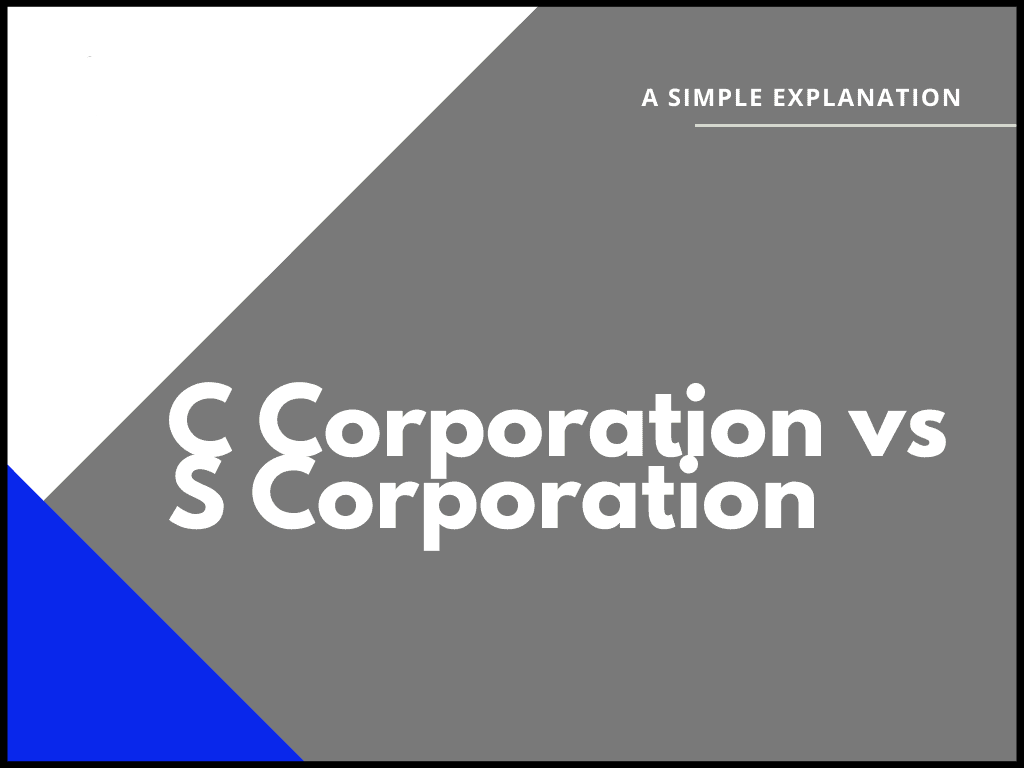The key differences between C-corps, S-corps, and unincorporated business structures have far-reaching implications for taxation and business owner responsibilities. This guide covers the information you need to choose the corporate tax status that is best for your business and how your company compares to other business structures.
C Corp Vs S Corp Definition
What is a company?
A corporation is a type of business entity created by filing articles of incorporation with the state. The owners of the company are called shareholders, and the company also has officers and directors who manage the business. As a legal entity, a company is considered separate from its shareholders, which means that shareholders are not personally liable for the company’s debts (shareholders’ liability is limited to their investment in the business). Companies are subject to legal requirements and “corporate formalities” that many other types of businesses do not. In this guide know the C Corp and S Corp Differences below;
The terms “C-corp” and “S-corp” refer to the tax classifications available to both corporations and limited liability companies (LLCs). By default, companies are taxed as C-corps, but some companies have the option to be taxed as S-corps. LLCs are usually taxed as sole proprietorships or partnerships, but they can also choose to be taxed as C-corps or S-corps.
Basics of C-Corps
C-corp is the most common corporate tax status. Like the S-corp, it takes its name from the subsection of the Internal Revenue Code that taxes it. Tax requirements are an important attribute that makes a C-corp a C-corp and an S-corp an S-corp.
Corporate income tax is first paid by the C-corp and is provided with the federal tax return (Form 1120) required by the IRS. Shareholders are required to pay personal income tax at the individual level on dividends and profits from the sale of shares. This arrangement is known as “double taxation” because dividends are taxed at both the corporate and individual levels. C-corp shareholders cannot cancel a company’s losses to offset other income in an individual income statement.
Corps C is preferred as there are no restrictions on who can own the shares. Other companies and entities in the United States and abroad may retain ownership of C-corp. There is no limit to the total number of shareholders. C-corp shareholders also enjoy the full protection of liability of any company.
Basics of S-Corps
The most notable feature of an S-corp is the so-called “pass-through” tax structure it offers. S-corps are exempt from federal corporate income tax — instead, dividend income is taxed only at the individual level. It also means that corporate losses can offset other sources of income if shareholders can meet certain criteria. S-corps receive all the same liability protection that corporate status as a separate entity provides.
The many strict rules of operating as an S-corp can eliminate or inhibit businesses that might otherwise seek that status. S-corporations cannot have more than 100 shareholders, effectively excluding companies that want to go public. Ownership is primarily limited to individuals, who must also be U.S. citizens or permanent residents, as well as certain domestic trusts, estates, and tax-exempt organizations.
Choose between C-Corp and S-Corp
There is no substitute for advice from a licensed legal and tax professional, but an overview of the pros and cons can point a business in the right direction and help its owners ask the right questions about forming a company or choosing a corporate status.
Alternatives to Consider
Although C-corps and S-corps have many desirable characteristics, they are not unique business structures or names. Here are some other options that business owners or future business owners might consider:
Other types of companies
Benefit corporations or B-corps (sometimes called public benefit corporations or PBCs) are for-profit corporations that balance obligations to shareholders with the public interest. Importantly, this is not a federal tax name, but a state name, which is available in most (but not all) states. A B-corp is usually also a C-corp, with the option of S-corp status if it meets the criteria. B-corps should not be confused with “Certified B Corporations,” which are certifications granted by non-profit Blabs. Not-for-profit corporations are formed for purposes other than shareholder profit. These individuals qualify for major tax benefits at both the state and federal levels, including exemption from federal income tax.
Other business structures
A limited liability company (LLC) straddles the boundary between the corporate model and the partnership model. If so chosen, an LLC can be taxed like a C-corp or S-corp, and the owners (called “members”) enjoy limited liability protections, but are not subject to the same regulatory and administrative requirements as corporations. While LLCs are easier for small business owners to form and manage, these structures are not friendly to easy outside investment.

